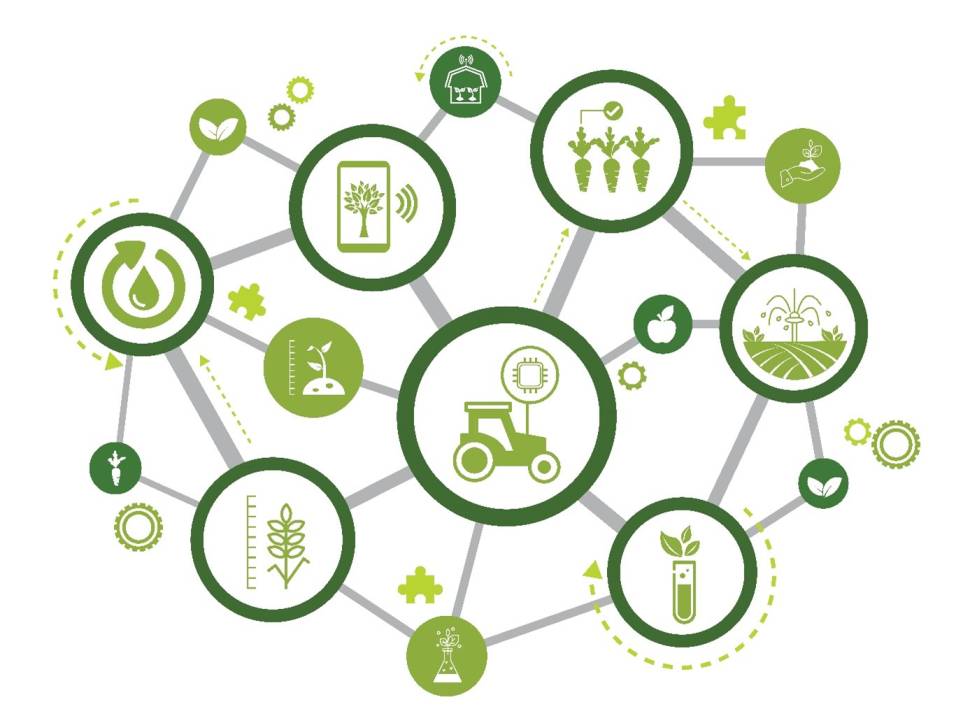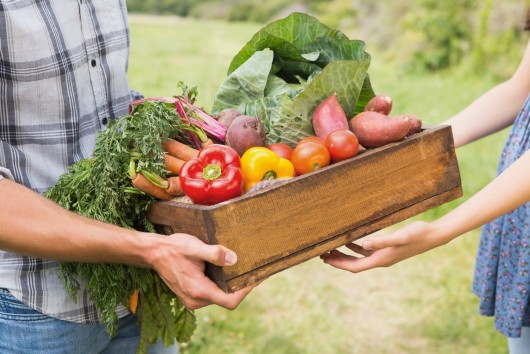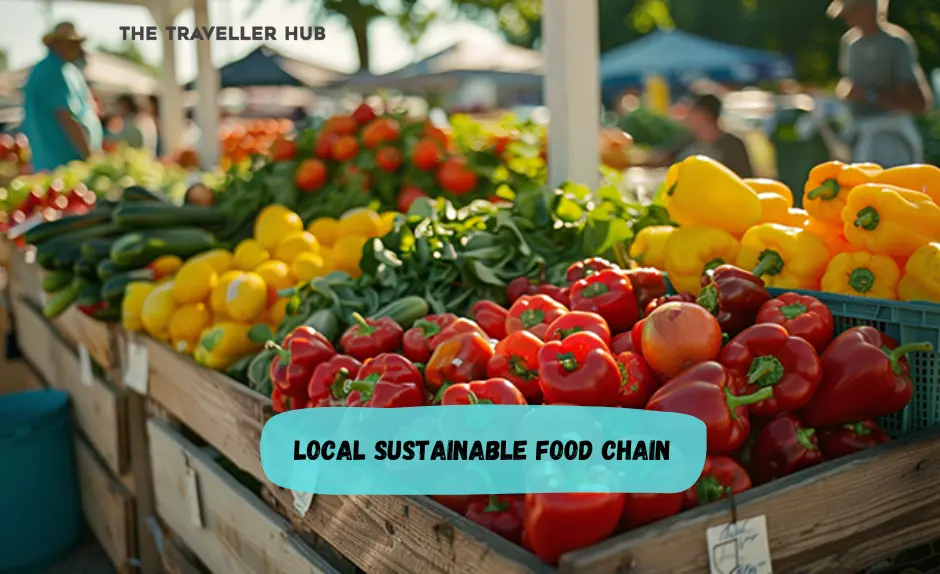Local sustainable food chain, where food often travels hundreds of miles before reaching our tables, there’s rising worry about the environmental and economic effects of our food choices. Enter the notion of the local sustainable food—a system that prioritizes local resources, reduces ecological imprint, and supports adjacent communities. This movement stresses lowering food miles, protecting natural resources, and ensuring farmers and food producers are treated properly.
Chapter 1: What Is a Local Sustainable Food Chain?
-
A nearby practical order of things alludes to a framework where food is developed, handled, conveyed, and eaten inside a bound geographic locale, with an accentuation on natural obligation and local area government assistance. Dissimilar to ordinary food frameworks, which depend on expansive inventory lines, the nearby reasonable pecking order empowers close connections among ranchers and customers. This closeness accommodates fresher item, lower transportation outflows, and a more straightforward pecking order.
-
Nearby Economy Lift: With an emphasis on privately created items, monies stay inside the local area, supporting neighbourhood ranchers, specialists, and food organizations.
-
Natural Advantages: Manageable methods in nearby cultivating limit water utilization, pesticide reliance, and soil consumption, while cutting ozone harming substance emanations.
-
Local area Commitment: Nearby manageable pecking orders foster connections, cultivate local area pride, and energize better lives.
Chapter 2: Key Components of a Sustainable Food Chain

Local Farming and Organic Practices
- At the core of each and every neighbourhood maintainable pecking order is the adherence to naturally amicable farming practices. Little to fair size cultivates regularly utilize natural, regenerative, and permaculture ways to deal with further develop soil wellbeing and support biodiversity.
Small-Scale Food Processing and Distribution
- In a sustainable food chain, food frequently goes through minimum processing and is handled by local enterprises. This lowers the need for preservatives, shipping, and large-scale production facilities, which can severely influence the environment.
Community Markets and Farm-to-Table Movements
- Farmers’ markets, food co-ops, and farm-to-table restaurants serve as vital distribution hubs within a local sustainable food chain cons. These channels allow consumers direct access to fresh, seasonal commodities while helping the local economy.
Chapter 3: The Environmental and Social Benefits of Local Sustainable Food Chains
Reduced Carbon Footprint and Resource Conservation
- One of the super natural advantages of the neighbourhood manageable pecking order is the enormous decrease in fossil fuel by-products. Food that doesn't have to go far takes less fuel, which rises to less nursery gasses. Furthermore, neighbourhood food frameworks often focus on water preservation and soil wellbeing, defending regular assets for people in the future.
Economic Benefits for Local Communities
- The nearby maintainable pecking order impacts neighbourhood networks. At the point when shoppers purchase from nearby ranchers, craftspeople, and food organizations, they keep cash moving all through the local area. This, thusly, extends open positions and helps build a strong, independent economy.
Improved Food Security and Resilience
- Neighbourhood food frameworks are characteristically heartier. In the midst of worldwide store network disturbances or environment related catastrophes, a nearby maintainable order of things offers networks with a steady food source that isn't as dependent upon outer shocks.
Chapter 4: How to Support and Participate in Sustainable Food Chains

Shop Locally and Seasonally
- One of the most straightforward ways of adding to a nearby economical pecking order is to purchase neighbourhood and occasional items. Ranchers' business sectors are phenomenal areas to begin, offering a determination of new organic products, vegetables, and distinctive things.
Join Community Supported Agriculture (CSA)
- CSA frameworks are a membership based framework where local area individuals pay for a portion of a rancher's creation. By joining a CSA, buyers support ranchers straightforwardly, permitting them to zero in on economic strategies rather than yield boost.
Advocate for Food Policy Changes
- Supporting a neighbourhood manageable order of things on a more extensive scale ordinarily includes changes in regulation. Upholding for strategies that help neighbourhood ranchers, natural horticulture, and economical practices might have a significant effect in the drawn out feasibility of these frameworks.
Chapter 5: Challenges and Solutions for Scaling Local Sustainable Food Chains
While the advantages are obvious, taking on a neighbourhood supportable pecking order accompanies its own arrangement of issues. Issues like as land shortage, contest from industrialized food frameworks, and the requirement for shopper instruction could hamper extension. Tending to these challenges requests inventive arrangements, like metropolitan cultivating, public-private joint efforts, and instruction drives that increment mindfulness about the need of supporting nearby food frameworks.
-
Metropolitan Cultivating Drives: Bringing agribusiness into urban communities through roof gardens, vertical homesteads, and local area nurseries can assist with taking care of metropolitan populaces economically.
-
Training and Local area Mindfulness: Empowering individuals to comprehend the advantages of a neighbourhood feasible pecking order provokes interest for manageable techniques.
-
Innovation in Supportable Farming: Arising advancements like accuracy horticulture, soil sensors, and block chain for food detectability can advance manageability and straightforwardness inside neighbourhood food frameworks.
Understanding the Sustainable Food Chain
A neighbourhood supportable pecking order is a food framework that burdens the creation, dispersion, and utilization of food provided from nearby ranchers and makers while lessening ecological impact. This technique not just includes cultivating rehearses that are naturally manageable yet additionally centres on supporting neighbourhood economies and making local area bonds.
Key Components of a Sustainable Food Chain
-
Neighbourhood Obtaining: Food is developed and delivered inside a given geographic district, diminishing transportation discharges and helping nearby economy. This could incorporate ranchers' business sectors, local area upheld agribusiness (CSA) projects, and nearby supermarkets that focus on neighbourhood items.
-
Feasible procedures: Ranchers and makers inside a nearby maintainable pecking order for the most part use strategies that protect the climate. This envelops natural cultivating, regenerative farming, and permaculture approaches that lift soil wellbeing, protect water, and support biodiversity.
-
Local area Commitment: A flourishing neighbourhood established pecking order creates local area commitment and instruction. This might be seen through studios, ranch visits, and cooperative occasions that connect clients with makers, encouraging a more noteworthy comprehension of food frameworks.
-
Occasional Eating: Underscoring occasional produce urges individuals to eat things that are at their ideal newness and dietary benefit while supporting nearby ranchers.
-
Decrease of Food Squander: A practical pecking order centres on limiting waste through measures, for example, fertilizing the soil, giving extra food, and using all segments of the item.
The Benefits of a Local Sustainable Food Chain

Embracing a local sustainable food chain has several benefits for individuals, communities, and the world. Here are some of the most major advantages:
1. Environmental Impact
- By acquiring food locally, we reduce the carbon influence associated with shipping food significant stretches. This drop in transportation discharges adds to a huge decrease in ozone harming substance outflows. Furthermore, economical farming procedures can improve soil wellbeing, save water, and empower biodiversity, prompting better biological systems.
2. Economic Support for Local Farmers
- When consumers opt to buy from local suppliers, they are directly helping their local economy. This helps retain money inside the community, providing jobs and ensuring that local agriculture can thrive. A local sustainable food chain cons increases resilience, making communities less reliant on foreign food supplies.
3. Healthier Food Choices
- Neighbourhood food is oftentimes fresher and more supplement thick than food that has voyaged extensive distances. By focusing on occasional food, purchasers might appreciate products of the soil at their ideal development, helping their flavour and dietary benefit. Besides, numerous nearby ranches pressure natural methods, diminishing openness to hazardous pesticides and synthetic compounds.
4. Strengthened Community Connections
- A nearby maintainable pecking order fosters a sensation of local area by connecting purchasers with individuals who ranch their food. Ranchers' business sectors, food centres, and CSAs offer an open door for associations with develop, empowering clients to find out about food sources and backing nearby undertakings.
5. Encouragement of Biodiversity
- Neighbourhood practical orders of things much of the time support a differed scope of yields and animals breeds, which further develops biodiversity. This assortment can help protect against crop disappointments, bugs, and illnesses, adding to a stronger food supply.
Conclusion: Moving Toward a Sustainable Food Future
The way to a more practical food future is through the foundation and backing of neighbourhood feasible pecking orders. These frameworks add to natural insurance, financial flexibility, and mutual prosperity. With joint exertion and information, we can lay out food frameworks that are biologically harmless as well as financially and socially fulfilling.

